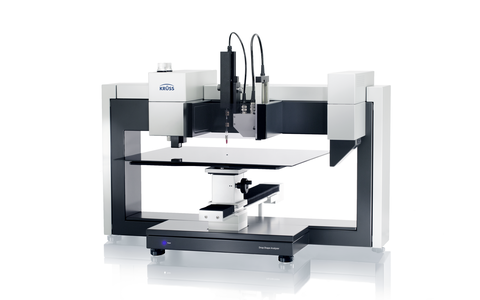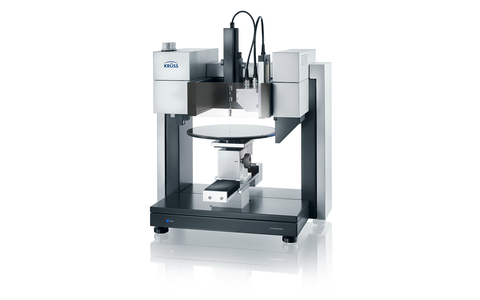
Recovery and processing of bitumen
Measuring methods for the extraction of bitumen and its optimization as a building material
Thanks to its hydrophobic properties, coatings made from bitumen provide an outstanding screen against water for roads and buildings. The building material, which is extracted from crude oil, is frequently emulsified in water with the help of surfactants for the purpose of extraction and processing. Our tensiometers provide important data for optimizing the emulsifying process.
The wetting of subsoils and admixed building materials is important when bitumen is used in construction. Our contact angle measuring instruments are used to characterize the wetting.
Use of surface chemistry to aid bitumen extraction
As the fraction of crude oil with the highest boiling point, bitumen is increasingly being extracted using tertiary oil recovery methods (Enhanced Oil Recovery, EOR). Steam injection is the primary method used for high-viscosity oils with high bitumen content. Assisted by naturally occurring or added surfactants, the oil thinned by water vapor is emulsified in and transported by water.
Measurements of the interfacial tension using our tensiometers help to produce stable bitumen emulsions. Dynamic interfacial tension measurements with a drop volume tensiometer simulate the occurrence of the interface as the liquid is transported at high speed, and therefore help to optimize the addition of surfactant. A spinning drop tensiometer measures the very small interfacial tensions down to 10-6 mN/m, which are aimed for in the oil recovery process.
In order to characterize the adhesion of the oil to the reservoir rock and its wetting by the surfactant solutions, our drop shape analysis instruments measure the wettability and the surface free energy of the rock based on the contact angle.
Interfacial tension and contact angle measurements with our high-pressure measuring instruments determine the relevant quantities under the temperature and pressure conditions of the reservoir. This enables the use of surfactant and the conduct of the extraction process to be matched to the realistically modeled interfacial processes.
Investigation of surfactants for separating bitumen and sand by froth flotation
Froth flotation is a solid separation process based on different wettability, which is also used for the separation of bitumen and sand. Here, gas is blown through the bitumen-sand suspension to which foaming agents have been added. The hydrophobic bitumen adsorbs on the gas bubbles and becomes enriched in the foam layer on the surface, from where it can be skimmed off.
Our instruments for foam analysis characterize the foamability of surfactant solutions and the foam stability based on reproducible height measurements. Additional foam structure investigations make an important contribution to the development of foam with as small a bubble size as possible with a large internal surface area and corresponding capacity for accommodating the bitumen.
Interfacial analyses for the use of bitumen as a building material
Bitumen is also provided in emulsified form when used for construction purposes. Surface chemical measurements using our tensiometers help in the production and stabilization of the emulsion.
Wetting and adhesion to rock is also important, both for the production of asphalt and for its adhesion to the rock subsurface. The surface properties of the two phases are always responsible for adhesion at the interface. Our tensiometers and contact angle measuring instruments measure the surface energy and surface tension of the two phases, thus enabling the adhesion to be calculated. The results lead to an overall picture of the interface contact, which enables the bitumen and its emulsion to be adapted accordingly. For example, this information is used to optimize the subsoil using additional bonding agents.














